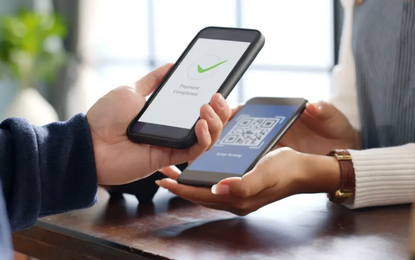

Banks that help their users understand and strengthen their financial position are the ones that gain more loyal customers in the long-term
What is the first screen the user sees when logging into their banking app? If it shows a list of their transactions, the bank may be missing a great opportunity. This space is a highly valuable, so it is worth making an effort to optimize it.
The app’s first screen offers a chance to strengthen the link between bank and customer, to help them with their financial situation – and to improve it. As such, consider offering a dashboard when the customer accesses their account on the mobile application or website. These tools are becoming more important on banking apps, as they offer data visualization that can be understood within seconds.
Instead of showing a breakdown of income and expenses, modern dashboards are tracking and real-time budgeting tools that help users.
Customers can obtain important information about their finances, such as bank statements, monthly income and expenses, monthly and daily available balance, and budget organized by category (or by goal), among other records. All of this, at a glance.
Having a dashboard allows a bank to provide its customers with a clearer and more transparent view of their money, while also educating them about finances and establishing trust between them.
Including dashboards in financial apps can help users when making non-transactional financial decisions. To do so, their design and development should combine dynamism, relevant information and human advice.
The dashboard needs to be comprehensive, interactive and linked to all the available information about users’ financial lives. And it should consider goals, social styles and personal preferences. This will allow it to provide personalized, up-to-date data.
Gamification is a tool that banks are increasingly using, to help change behaviours. It’s a resource that ‘is 75% psychology and 25% technology’, according to Gabe Zichermann, co-author of Gamification by Design.
How to use it? One way of gamifying the dashboard is to have a dynamic well-being score, which can fluctuate in real time based on each user’s needs and activities. This indicator would offer information about fixed expenses, saving goals and debts to pay, among other things. You could also add to that how some factors, such as new debts or costs incurred in real time, improve or harm this financial well-being.
If you are looking to expand the experience beyond information, there is the option of adding a reward program - another gamification strategy. This involves offering benefits or discounts to customers every time their financial situation improves or when they achieve saving goals.
To make this interaction bidirectional, a chatbot could be added to link the client with an advisor that can recommend ways to improve the scores, or simply to help find more information about financial management.
Another way of developing a dashboard that stands out is by including other services according to each user’s needs. For example, if you show a panel with saving goals for a trip, or for buying a car, you can enhance the experience by embedding tools for them to look for flight options or promotions at vehicle dealerships. Adding this can be done through APIs.
So far, we have seen that the aim of a dashboard is to offer a comprehensive overview of a user’s financial situation, along with useful information that allows them to make decisions.
There are hundreds of ways to represent a set of data, from a table form, a pie chart or a detailed graph, but the variety often ends up complicating understanding. The best thing to do is to focus on simplicity and readability.
If, for instance, you are displaying data in tables, stick with that across all the information that is presented. A mix of structures for each set of data can seem confusing and inconsistent.
At the same time, filling the table with information might not be the best idea: keep it to a minimum. Users can always explore this further if they are interested in it.
In terms of reading, for example, what is clearer? US$84,389.95? Or $84,000? The latter, obviously. The way we talk with the customer defines how they behave, and that is where the importance of closely looking at your UX writing comes in.
Before choosing a design, it is important to keep in mind that the format is not about the data itself - but about communicating information. If you think about customers first, you can quickly understand what type of design will help them interpret the figures.
Data - as cold and harsh as they may be - need to be presented as if a person were talking about them, so simple and natural language should be used. With a dashboard, a client’s financial situation is explained to them. And that way, you can create a relationship of trust.
Join our online community and stay up to date with the latest news from the world of technology.